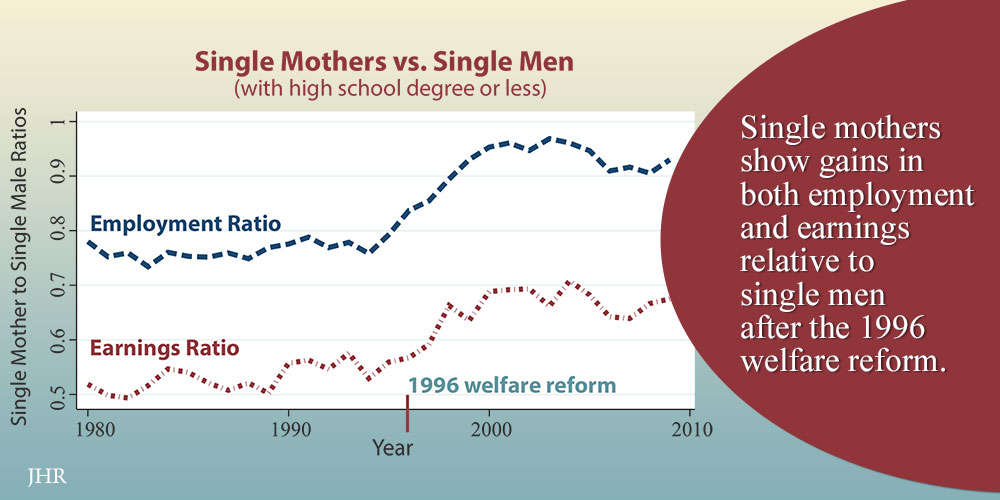Who Needs a Ring? The 1996 Welfare Reform’s “Independence Effect”
In 1996 federal welfare reform replaced the Aid to Families with Dependent Children (AFDC) program, the oldest welfare program for the poor, with the Temporary Assistance to Needy Families (TANF) program. The primary goal of this historic reform was to encourage work and decrease welfare dependence. However, another explicit goal was to decrease single motherhood and encourage marriage. This emphasis on single motherhood and marriage is based on a long-standing criticism of the AFDC program—that it discouraged marriage because the eligibility rules made it difficult for married couples to receive benefits from the program.
In a recent study, Robert Moffitt, Brian Phelan, and Anne Winkler take advantage of the passage of time to reexamine whether welfare reform had its intended effect of discouraging single motherhood and encouraging marriage.
First, the authors note that the program rules do not discourage marriage per se, but discourage women from living with the biological fathers of their children—whether married or not. Women who marry or cohabit with a man who is not the biological father of their children are treated much more leniently.
Incorporating this insight into their analysis and examining the family structure effects over a longer period of time, the authors find that, while many of the rules had no effect on family structure, several work-related reforms, including work requirements, actually increased single parenthood and decreased marriage to biological fathers. The reform therefore appears to have had the exact opposite effect as intended.
The authors posit that these changes in family structure result from increased earnings of mothers induced to leave welfare, allowing them to sustain themselves independently off welfare without the need for a male partner. Moreover, this “independence effect” may have been accentuated by the low and declining earnings of potential male partners, making them unattractive mates.
This improvement in the relative economic performance of less-educated single mothers is depicted in the figure, which shows that mid-1990’s welfare reform led to a large increase in the relative labor force participation and earnings for these women compared to their potential male partners.
So what are the policy implications of these findings? Moffitt and his coauthors identified several, “First, the recent proposals to impose work requirements on SNAP and Medicaid recipients could have unintended effects on family structure that should be considered. Second, the earnings of men likely to partner with low-income women are very low, and renewed efforts to increase the employment and earnings of unskilled men could have beneficial effects on marriage rates. Third, the TANF program should reexamine how it treats households with two biological parents and consider reducing the harshness of its eligibility requirements for such families.”
Read the full study in The Journal of Human Resources: “Welfare Rules, Incentives, and Family Structure,” by Robert Moffitt, Brian Phelan, and Anne Winkler.
***
Robert A. Moffitt (@ramoffitt3) is a Professor of Economics at Johns Hopkins University and is an NBER, IRP, and IZA Affiliate. Brian J. Phelan is an Assistant Professor of Economics at DePaul University. Anne E. Winkler is a Professor of Economics and Public Policy Administration at the University of Missouri at St. Louis and is an IZA Affiliate.




